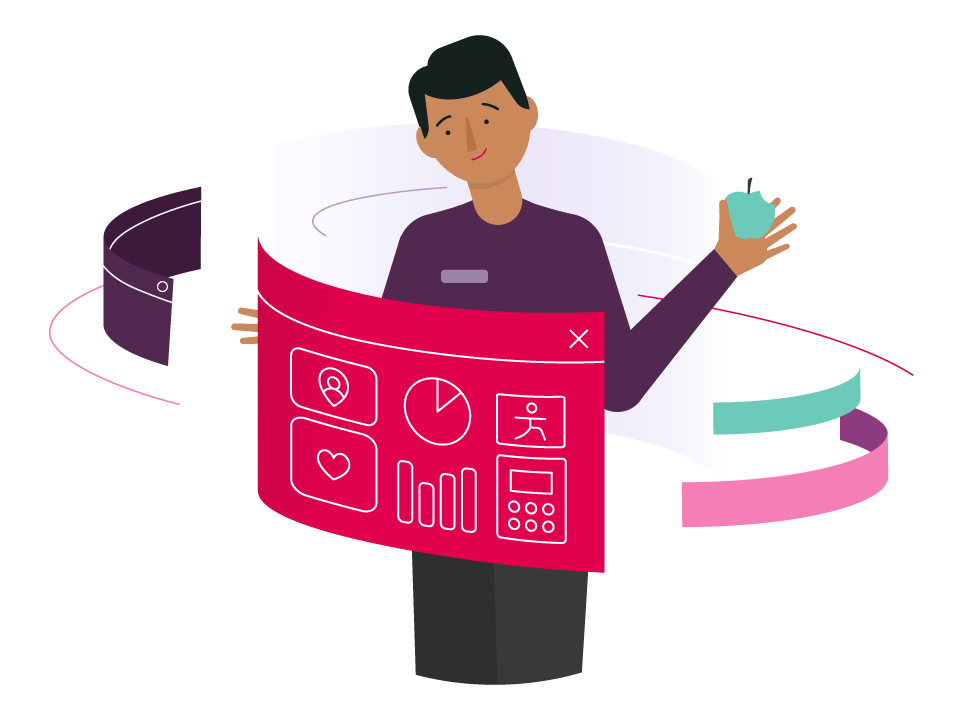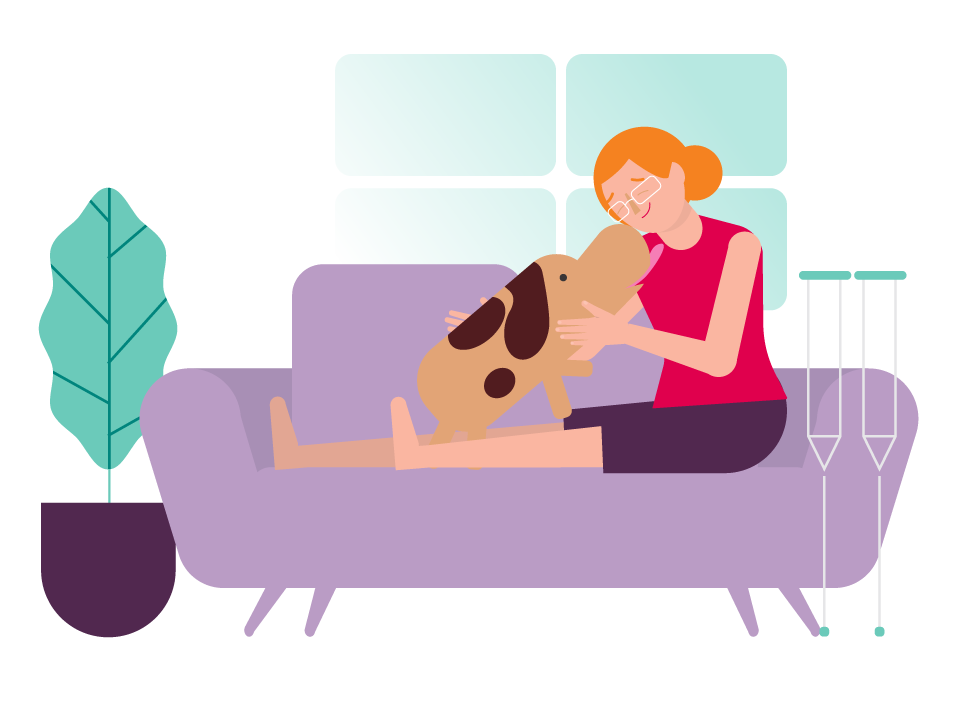USING THIS GUIDE WHAT’S COVERED
Here you’ll find answers to many of your questions about microdiscectomy. Learn how it’s done, what your recovery may be like, and more.
To see how the surgery’s performed, view our animation below.
Before deciding on microdiscectomy, be sure to check out other back pain treatments first.
The Basics
What's microdiscectomy surgery?
This minimally-invasive surgery removes part of an intervertebral disc to reduce pressure on your spinal cord or spinal nerves.
Your spinal cord is a soft bundle of nerves that runs the length of your spine. It carries signals between your brain and your body. Intervertebral discs sit between the bones of your spine. They’re filled with a squashy material that acts as a shock absorber between the bones. Sometimes, due to injury, ageing or a spinal deformity, material from one of the discs herniates (slips or bulges out) and puts pressure your spinal cord. The problem normally affects the lower (lumbar) spine or the neck (cervical spine).
People with this problem often complain of painful spasms as their body attempts to re-stabilise the spine. They often experience low-grade pain between flare-ups. A damaged disc in the neck can also cause neck pain, nerve pain or spinal cord compression, leading to severe disability. A lumbar herniated disc can cause buttock pain and sciatica (pain radiating down the back of your leg). Some people also experience loss of bladder or bowel control.
How's a microdiscectomy done?
During the procedure, your surgeon makes a small incision in your lower back (for a herniated disc in your lumbar spine) or back of your neck (for a herniated disc in your cervical spine), then removes the part of the disc that is herniated. The surgery is performed under general anaesthetic.
Where's it done?
Microdiscectomy is done in a hospital or day clinic. It’s usually done as a same day procedure but you may need an overnight hospital stay.
How long does it take?
The surgery usually takes 1–2 hours.
Who's involved?
In addition to a neurosurgeon or an orthopaedic spinal surgeon, it also involves:
- an assistant surgeon
- an anaesthetist
- nurses
- a radiographer (for X-rays)
- a physiotherapist
- an occupational therapist.
The details
CONSIDERING THE PROCEDURE
Alternatives to microdiscectomy
There are alternatives to microdiscectomy in some cases.
Learn more
Types of microdiscectomy
There are some variations in the way the surgery is performed.
Learn more
Results vs risks of the procedure
The benefits and risks of microdiscectomy.
Learn more
Choosing a specialist
How to find a neurosurgeon or orthopaedic surgeon who specialises in this procedure.
Learn more
PREPARATION
Questions for your specialist
What you should ask before going ahead with microdiscectomy.
Learn more
Preparing for your procedure
Pre-operative tests and preparation prior to microdiscectomy.
Learn more
Your anaesthetic options
About the options for anaesthetic and post-op pain relief.
Learn more
YOUR PROCEDURE
Going to hospital
What to expect on the day of your surgery.
Learn more
Your procedure
What happens in the operating theatre
Learn more
RECOVERY AND AFTERCARE
After your procedure
Your hospital stay.
Learn more
Aftercare
Resuming activities and watching for problems.
Learn more
SECOND OPINION SERVICE
UP TO 15% OFF CTG MEDICAL DEVICES
Give us feedback
Did you find this guide helpful? Let us know what you liked or what we can do to improve it. We'd love to hear from you.
To provide feedback, email us at wellbeing@hcf.com.au.
Related articles
SECOND OPINION
Eligible HCF members can get a free second opinion on their health condition from a certified, practising medical specialist.
Find a doctor
Search for specialists who participate in our Medicover no-gap or known-gap scheme.
Find a health professional
Search for providers who participate in our More for You program. Find physios, chiros, podiatrists and more.
Important information
* To access the discount, log in to the My Membership app or online member services, look for the CTG offer under Health & Wellbeing Programs, and click ‘Explore the CTG range’. Offer applies to selected products only.
Information is provided by HCF in good faith for the convenience of members. It is not an endorsement or recommendation of any form of treatment nor is it a substitute for medical advice, and you should rely on the advice of your treating doctors in relation to all matters concerning your health. Every effort has been taken to ensure the accuracy of the information, however HCF takes no responsibility for any injury, loss, damage or other consequences of the use of this information.







